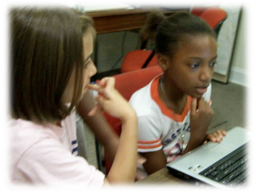Linguistics, Cultural Background, and Comprehension
x
1. Linguistic Theory in the Classroom
Social Context and Pragmatics
A first- grade classroom is responsible for a small flower garden on the grounds of the school. As the children prepare to go out to the garden, the teacher asks: Who remembers what the flowers need?
The social context is established by default. The teacher is in charge and most student talk is in  response to teacher questions. This is the structure that is (culturally) expected in classroom settings. The students know from experience that when this kind of question is asked, they are free to call out their responses. The teacher’s question serves two pragmatic functions: focusing the children’s thoughts on what they need to do in the garden, and reviewing plant knowledge learned recently. So the social context and the purpose/ pragmatics have been established.
response to teacher questions. This is the structure that is (culturally) expected in classroom settings. The students know from experience that when this kind of question is asked, they are free to call out their responses. The teacher’s question serves two pragmatic functions: focusing the children’s thoughts on what they need to do in the garden, and reviewing plant knowledge learned recently. So the social context and the purpose/ pragmatics have been established.
How do speech utterances convey meaning? As an English-speaking adult, the teacher is not thinking about these factors, but they affect how the English language learners (and everyone else) understand what she is saying. Meaning is conveyed in all languages by the systematic and coordinated use of rules governing sounds, including intonation, pitch, and juncture (phonology), word formation (morphology), and word order (syntax). Each language in the world uses a finite set of sounds that make a difference for meaning: phonemes. Of course different languages follow different rules, but the components of sounds such as intonation, pitch, and juncture (the relationship between one sound and the sounds that immediately precede and follow it e.g. ice cream and I scream) phonology, word formation (morphology), and word order (syntax) are the rule-governed components of all languages. Each language in the world uses a finite set of sounds that make a difference for meaning: phonemes. For example /p/ and /b/ are phonemes in English because the sound differences make a difference in meaning.
In the classroom conversation referenced above, the children responded to the teacher that they were going to “pull the weeds.” If they had said “pull the seeds,” varying the response by only one phoneme, it would still make sense but would change the meaning completely, in a way that would be disastrous for the garden! If the children had said “pull the grickl,” they would have used a combination of sounds that is not English at all. The correctness of their answer is a function of understanding phonology.
Had the children responded with we will “weeds the pull,” they would have made an error of syntax, that is of English rules of word order or syntax. Alternatively, had they said “pull the weed” instead of “weeds” this would be an issue of morphology because they needed the plural form with the -/s/ suffix to accurately convey meaning. Prefixes, suffixes, and root words are the building blocks or morphemes from which words are formed and, in all languages, the structure of the linguistic building is governed by rules. All three rule-governed systems - phonology, morphology and syntax - work together simultaneously to help create meaningful sentences. Native speakers of any language acquire these structures through imitation and interaction. Polishing sophisticated language production comes with schooling. Second language learners need to acquire (and learn) these linguistic components in a variety of ways during their school experience.
Linguistics and Comprehension
How does all of this work into reading fluency and comprehension? The more we can continue to build the vocabularies of students, the more opportunities we provide them to use words in multiple contexts through reading, writing, listening and speaking, the more likely they are to make academic progress along the continuum of language and literacy development. Before reading comprehension can take place, students must have a vocabulary base to work off of. Before they can use vocabulary, they must know how to deconstruct words - it is a cycle that ebbs and flows to and from a first and second language. These and other linguistics elements (morphology, syntax, phonology, semantics, pragmatics) will be further detailed with regard to second language acquisition in the module that follows.